1. Walia HM, Brantley WA, Gerstein H. An initial investigation of the bending and torsional properties of Nitinol root canal files. J Endod. 1988; 14:346–351. PMID:
3251996.

2. Gavini G, Santos MD, Caldeira CL, Machado MEL, Freire LG, Iglecias EF, Peters OA, Candeiro GTM. Nickel-titanium instruments in endodontics: a concise review of the state of the art. Braz Oral Res. 2018; 32:e67. PMID:
30365608.

3. Hilt BR, Cunningham CJ, Shen C, Richards N. Torsional properties of stainless-steel and nickel-titanium files after multiple autoclave sterilizations. J Endod. 2000; 26:76–80. PMID:
11194376.

4. Darabara M, Bourithis L, Zinelis S, Papadimitriou GD. Susceptibility to localized corrosion of stainless steel and NiTi endodontic instruments in irrigating solutions. Int Endod J. 2004; 37:705–710. PMID:
15347296.

5. Talha M, Behera CK, Sinha OP. A review on nickel-free nitrogen containing austenitic stainless steels for biomedical applications. Mater Sci Eng C. 2013; 33:3563–3575.

6. Wright PP, Kahler B, Walsh LJ. Alkaline sodium hypochlorite irrigant and its chemical interactions. Materials (Basel). 2017; 10:1147–1155.

7. Pedullà E, Benites A, La Rosa GM, Plotino G, Grande NM, Rapisarda E, Generali L. Cyclic fatigue resistance of heat-treated nickel-titanium instruments after immersion in sodium hypochlorite and/or sterilization. J Endod. 2018; 44:648–653. PMID:
29397218.

8. Ametrano G, D'Antò V, Di Caprio MP, Simeone M, Rengo S, Spagnuolo G. Effects of sodium hypochlorite and ethylenediaminetetraacetic acid on rotary nickel-titanium instruments evaluated using atomic force microscopy. Int Endod J. 2011; 44:203–209. PMID:
20880135.

9. Bonaccorso A, Tripi TR, Rondelli G, Condorelli GG, Cantatore G, Schäfer E. Pitting corrosion resistance of nickel-titanium rotary instruments with different surface treatments in seventeen percent ethylenediaminetetraacetic acid and sodium chloride solutions. J Endod. 2008; 34:208–211. PMID:
18215684.

10. Lee JB, Yoon SI. Effect of nitrogen alloying on the semiconducting properties of passive films and metastable pitting susceptibility of 316L and 316LN stainless steels. Mater Chem Phys. 2010; 122:194–199.

11. Prymak O, Klocke A, Kahl-Nieke B, Epple M. Fatigue of orthodontic nickel-titanium (NiTi) wires in different fluids under constant mechanical stress. Mater Sci Eng A. 2004; 378:110–114.

12. Stokes OW, Fiore PM, Barss JT, Koerber A, Gilbert JL, Lautenschlager EP. Corrosion in stainless-steel and nickel-titanium files. J Endod. 1999; 25:17–20. PMID:
10196837.

13. Yum JW, Park JK, Hur B, Kim HC. Comparative analysis of various corrosive environmental conditions for NiTi rotary files. J Korean Acad Conserv Dent. 2008; 33:377–388.

14. Berutti E, Angelini E, Rigolone M, Migliaretti G, Pasqualini D. Influence of sodium hypochlorite on fracture properties and corrosion of ProTaper Rotary instruments. Int Endod J. 2006; 39:693–699. PMID:
16916358.

15. Pereira ES, Peixoto IF, Viana AC, Oliveira II, Gonzalez BM, Buono VT, Bahia MG. Physical and mechanical properties of a thermomechanically treated NiTi wire used in the manufacture of rotary endodontic instruments. Int Endod J. 2012; 45:469–474. PMID:
22188417.

16. Ye J, Gao Y. Metallurgical characterization of M-Wire nickel-titanium shape memory alloy used for endodontic rotary instruments during low-cycle fatigue. J Endod. 2012; 38:105–107. PMID:
22152631.

17. Aoun CM, Nehme WB, Naaman AS, Khalil IT. Review and classification of heat treatment procedures and their impact on mechanical behavior of endodontic files. Int J Curr Res. 2017; 9:51300–51306.
18. Gutmann JL, Gao Y. Alteration in the inherent metallic and surface properties of nickel-titanium root canal instruments to enhance performance, durability and safety: a focused review. Int Endod J. 2012; 45:113–128. PMID:
21902705.

19. Prasad PS, Sam JE, Kumar A, Kannan . The effect of 5% sodium hypochlorite, 17% EDTA and triphala on two different rotary Ni-Ti instruments: an AFM and EDS analysis. J Conserv Dent. 2014; 17:462–466. PMID:
25298649.

20. Ramires I, Guastaldi AC. Study of Ti-6Al-4V biomaterial using electrochemistry and XPS techniques. Quim Nova. 2002; 25:10–14.
21. Olmedo DG, Tasat DR, Duffó G, Guglielmotti MB, Cabrini RL. The issue of corrosion in dental implants: a review. Acta Odontol Latinoam. 2009; 22:3–9. PMID:
19601489.
22. Silva EF, Oliveira LF. Chemical and metallographic characterization of stainless steel in implants removed from patients. Acta Ortop Bras. 2011; 19:280–285.
23. Sonntag RE, Gordon JV. Introduction to thermodynamics: classical and statistical. 3rd ed. Hoboken, NJ: John Wiley & Sons, Inc;1991. p. 800.
24. Lambert FL. Configurational entropy revisited. J Chem Educ. 2007; 84:1548–1550.

25. Es-Souni M, Es-Souni M, Fischer-Brandies H. On the properties of two binary NiTi shape memory alloys. Effects of surface finish on the corrosion behaviour and in vitro biocompatibility. Biomaterials. 2002; 23:2887–2894. PMID:
12069329.

26. Thompson SA. An overview of nickel-titanium alloys used in dentistry. Int Endod J. 2000; 33:297–310. PMID:
11307203.



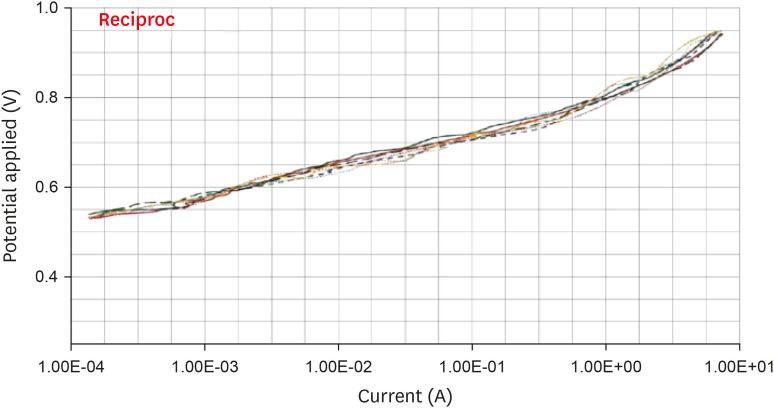
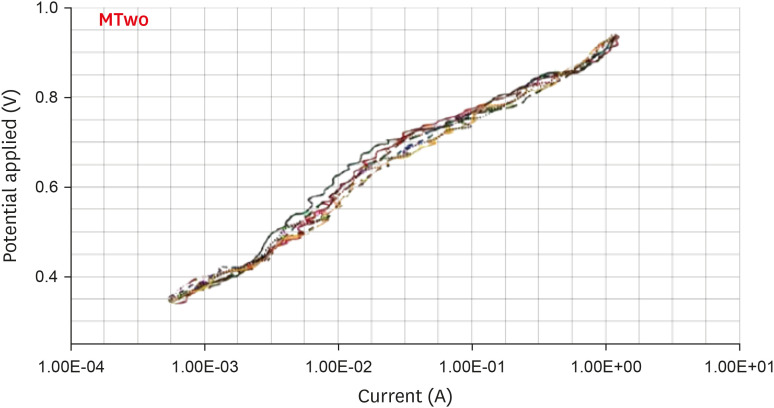
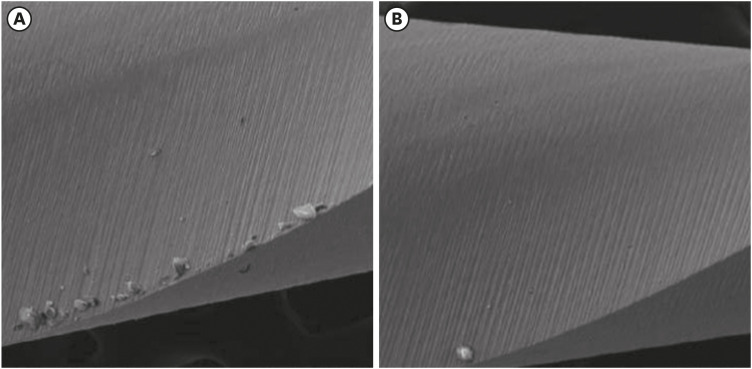
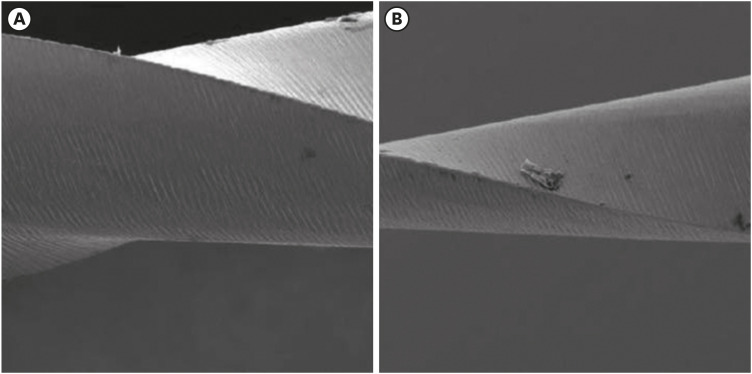




 PDF
PDF Citation
Citation Print
Print






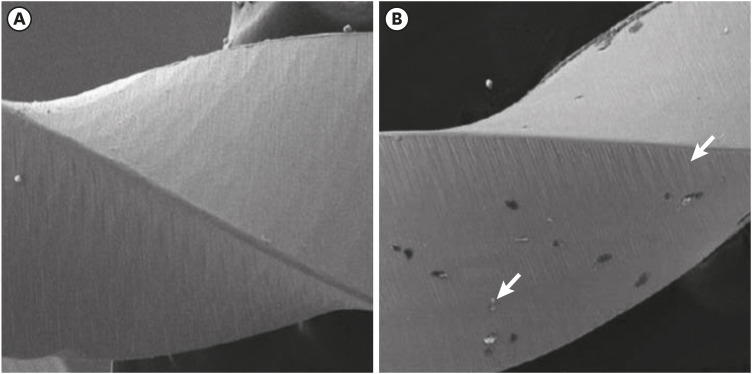
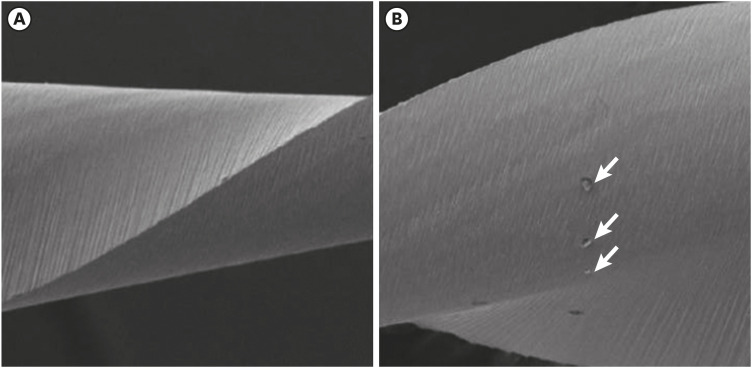
 XML Download
XML Download